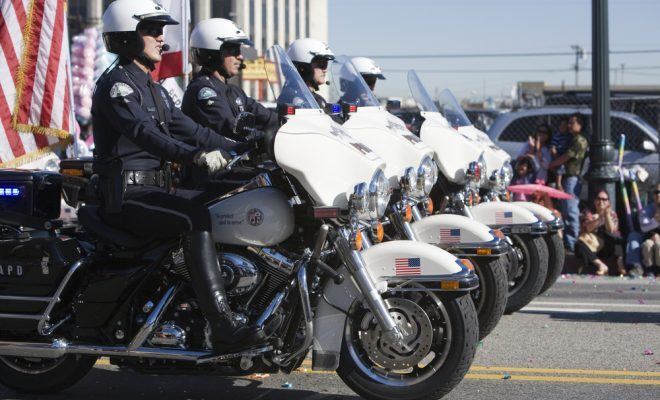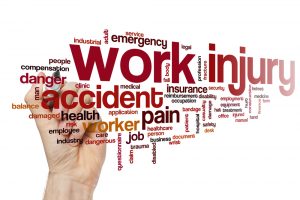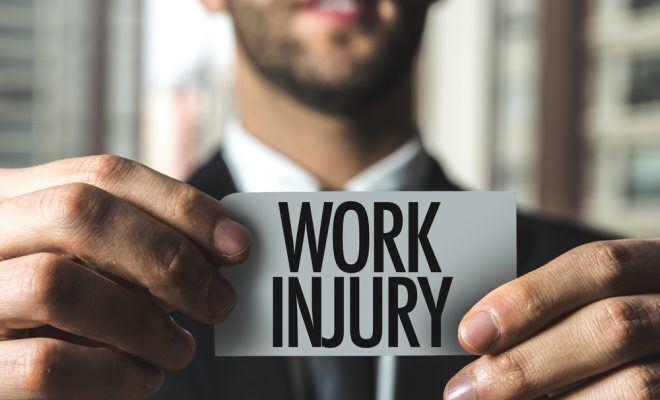A California Motorcycle Officer suffered a fatality in a highway crash. The Manhattan Police Officer, who was recognized as a hero from the Las Vegas mass shooting, was reportedly going to work when the accident happened. This fact pattern raises the question as to whether someone injured while driving to work can claim a work injury and receive workers’ compensation benefits.
Per the Associated Press, it is reported that the Manhattan Beach Police Officer was likely heading to work when the collision happened shortly after 5 a.m. on Interstate 405 in Carson,
This article will discusses how this type of accident can be considered as an industrial event.
Can A Worker File A Workers’ Compensation Claim If They Got Hurt On Their Way To Or From Work?
While California Workers’ Compensation Law precludes recovery from injuries sustained during commutes, there are exceptions to the rule. Therefore, in these matters, a complete factual analysis is required. Further, these cases are likely to be litigated.
The following is a discussion of the “going and coming” rule. Per case law, “[t]the going and coming precludes [recovery under the Workers’ Compensation Act] for injury suffered during the course of a local commute to a fixed place of business at fixed hours in the absence of exceptional circumstances. (Hinojosa v. Workmen’s Comp. Appeals Bd. (1972) 8 Cal. 3d 150, 157 [37 Cal. Comp. Cases 734, 104 Cal. Rptr. 456, 501 P.2d 1176].) [] For purposes of the rule, the employment relationship does not begin until an employee enters the employer’s premises. Prior to entry the going and coming rule ordinarily precludes recovery after entry, injury is generally presumed compensable as arising in the course of employment. (Pacific Indem. Co. v. Industrial Acc. Com. (1946) 28 Cal. 2d 329, 336 [11 Cal. Comp. Cases 148, 170 P.2d 18] Cal. Cas. Ind. Exch. v. Ind. Acc. Com. (1943) 21 Cal. 2d 751, 755 [8 Cal. Comp. Cases 55, 135 P.2d 158]1 Larson, Workmen’s Compensation Law (1972) §§ 15.00–15.11, pp. 4–2—4–4.)” (General Ins. Co. v. Workers’ Comp. Appeals Bd. (1976) 16 Cal. 3d 595, 598 [41 Cal. Comp. Cases 162, 128 Cal. Rptr 417, 546 P.2d 1361].) The going and coming rule, however, is riddled with exceptions. (Hinojosa v. Workmen’s Comp. Appeals Bd. (1972) 8 Cal. 3d 150, 156 [37 Cal. Comp. Cases 734, 104 Cal. Rptr. 456, 501, P.2d 1176] Bramall v. Workers’ Comp. Appeals Bd. (1978) 78 Cal. App. 3d 151, 156 [43 Cal. Comp. Cases 288, 143 Cal. Rptr. 105].)
One such exception to the going and coming rule is the “special mission” exception. Under this exception, “An injury suffered by an employee during his regular commute is compensable if he was also performing a special mission for his employer. (2 Hanna, [Cal. Law of Employee Injuries and Workmen’s Compensation (2d ed.)], § 9.03[3][iv], pp. 9–41—9–43.) The employee’s conduct is ‘special’ if it is ‘extraordinary in relation to routine duties, not outside the scope of employment.’ (Schreifer v. Industrial Acc. Com. (1964) 61 Cal. 2d 289, 295 [29 Cal. Comp. Cases 103, 38 Cal. Rptr. 352, 391 P.2d 832].) The special mission rule ‘is ordinarily held inapplicable when the only special component is the fact the employee began work earlier or quit work later than usual.’ (1 Larson, [Workmen’s Compensation Law], § 16.12, p. 4–98.)” (General Ins. Co. v. Workers’ Comp. Appeals Bd., supra, 16 Cal. 3d at p. 601.)
Another well recognized exception to the going and coming rule is the “special risk” exception. “If, prior to entry upon the [employer’s] premises, an employee suffers injury from a special risk causally related to employment, the injury is compensable under the ‘special risk’ exception to the going and coming rule. ‘The facts that an accident happens upon a public road and that the danger is one to which the general public is likewise exposed, however, do not preclude the existence of a causal relationship between the accident and the employment if the danger is one to which the employee, by reason of and in connection with his employment, is subjected pecul[iar]ly or to an abnormal degree.’ (Freire v. Matson Navigation Co. (1941) 19 Cal. 2d 8, 12 [6 Cal. Comp. Cases 302 118 P.2d 809]1 Larson, supra, § 9.30, pp. 3–48—3–50).” (General Ins. Co. v. Workers’ Comp. Appeals Bd., supra, 16 Cal. 3d at p. 600.)” Baroid vs. WCAB (1981) 46 C.C.C. 790.
With Respect to the “Going and Coming Rule”, Is The Analysis Different for Police Officers?
Yes. There is the case of Garzoli which addressed the extraordinary nature that can be involved in law enforcement.
The Supreme Court in Garzoli vs. WCAB 35 Cal. Comp. Cases 193, dealt with case involving the following facts: “On June 6, 1968, he began his regular shift at 4 p.m. and “checked out” with the lieutenant or watch manager at midnight. He started home on his own motorcycle (which he did not use in his work), wearing his police uniform and carrying his pistol. A few minutes later, his motorcycle was struck by a negligently driven automobile, and he sustained severe injuries, which caused his death July 4, 1968.” Further “There was evidence that …[the Officer]… was on call 24 hours a day; that he had been called many times to report for duty at a time other than his regular shift (such as when a riot was antipicated, or the lieutenant or watch manager had to be away, or for marksmanship practice); that the police department’s “Manual of Policies and Procedure” did not deal with the matter of a police officer’s norma going and coming between his home and the police station; and that although the manual provided that police officers were prohibited from engaging in law enforcement activities while off duty within the city except in cases or extreme emergency or when it appeared that someone’s life was in danger, such policy was not followed by the department, and off-duty officers were expected to render assistance in less serious situations.
In the latter respect, the chief of the police department testified: “If somebody was in need of help, and in a small community of our size where a policeman is known by just about every individual, and he refused to help—well, what would happen to him and what would happen to the police department as a whole? So as a consequence if somebody needed help, and irregardless of whether he had a weapon or not, I would censor [sic] them if they did not help these people.” The chief further testified that there was no adequate place for a police officer to change from street clothes into his uniform, or vice versa, at the police station and that it was with his consent that an officer might wear his uniform and carry his pistol in going and coming between his home and the police station.” There was additional information that was presented at trial that “the lieutenant or watch manager with whom the decedent had “checked out” at midnight when he left the station testified that it was with his knowledge and consent that the decedent wore his uniform, carried his pistol, and rode his motorcycle in going and coming between his home and the police station. He also testified that he had worked the same shift as the decedent that night; that he came upon the scene of the accident shortly after it occurred; and that he immediately “in [his] official capacity . . . administered first aid and questioned the persons standing there,” assisting fellow officers in apprehending the driver of the automobile involved in the accident (hit and run), and made an official report as an investigating officer.” Further at trial, “there was also evidence that the decedent lived about a mile and a quarter or a mile and a half from the police station; that there was no public transportation available to him; that the only way he could go to work was to walk, drive his own vehicle, or hire a taxi; and that the city did not pay him any mileage.
In this case, the Supreme Court noted that “In the present case, the city did not require that the decedent furnish a vehicle of transportation on the job. From the testimony of the police chief, however, it is clear that, as a practical matter, the decedent was required to wear his official uniform to and from work and that, at least when so clothed, carrying his pistol, and traveling conspicuously in the public streets on a motorcycle on his way home immediately after completing his shift, he was expected to render assistance to members of the public in the field of law enforcement, if needed.
Accordingly, it is a reasonable extension of the exception laid down in Smith to hold that under the circumstances here shown, the decedent was engaged “in conduct reasonably directed toward the fulfillment of his employer’s requirements, performed for the benefit and advantage of the employer,” as a result of which the going and coming exclusion is inapplicable.”” [emphasis added]
In sum, with respect to the recently deceased officer, his facts will be analyzed against the facts of the Garzoli case as well as the legal theories employed to create the exception to the going and coming rule. From the news accounts, there seemed to be some question as to whether he in fact on his way to work. This is a significant issue that requires clarification. Likewise, there will be an investigation as to the necessity of wearing a uniform and weapon when driving a police motorcycle. Further, there will be an investigation as to whether there was an expectation that this Officer was expected to render assistance to members of the public. All of these factors, and others, will bring weight into the analysis.
What If I Need Legal Advice?
If you would like a free consultation regarding workers’ compensation, please contact the Law Offices of Edward J. Singer, a Professional Law Corporation. We have been helping people in Central and Southern California deal with their workers’ compensation cases for 30 years. Contact us today for more information.




